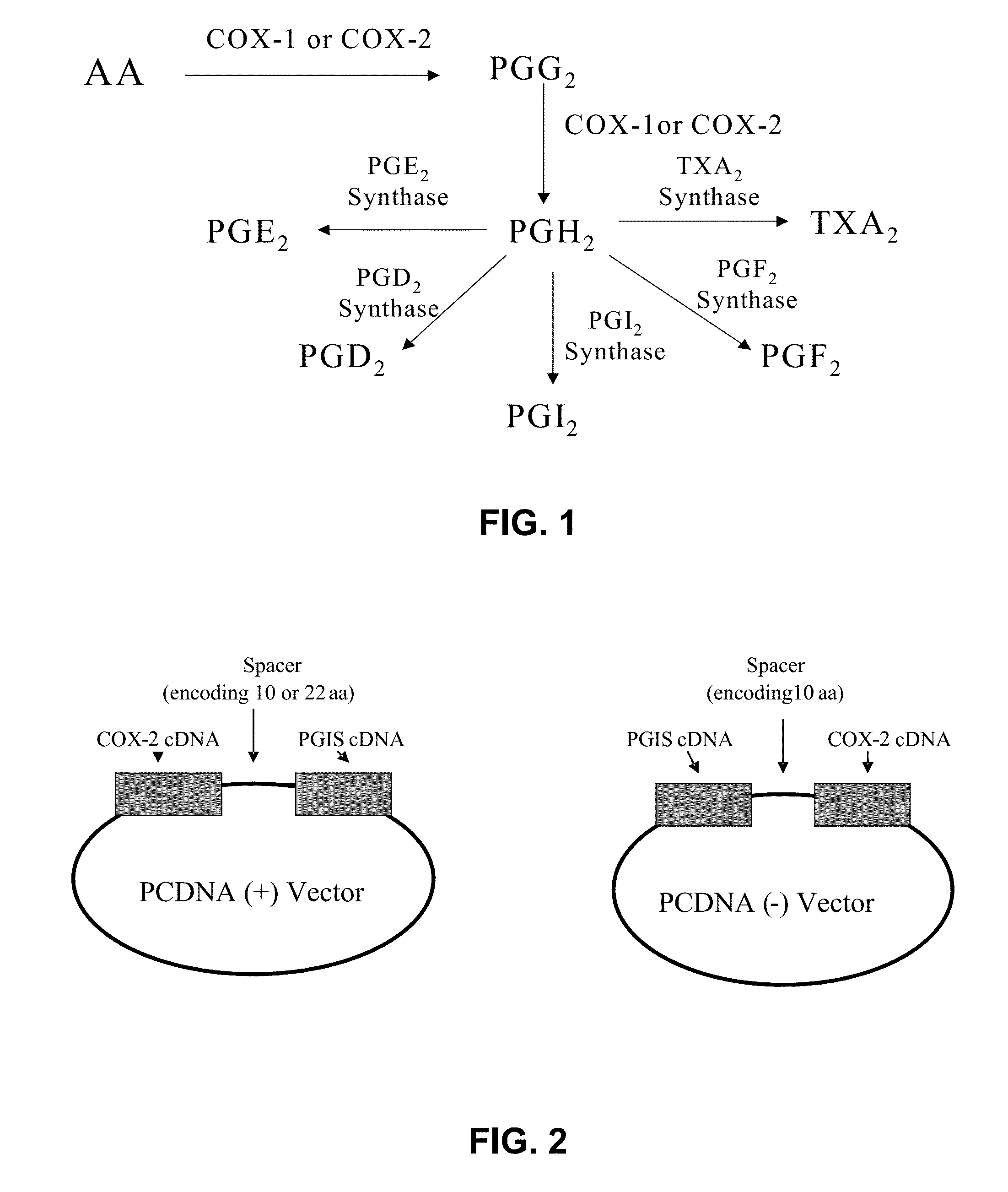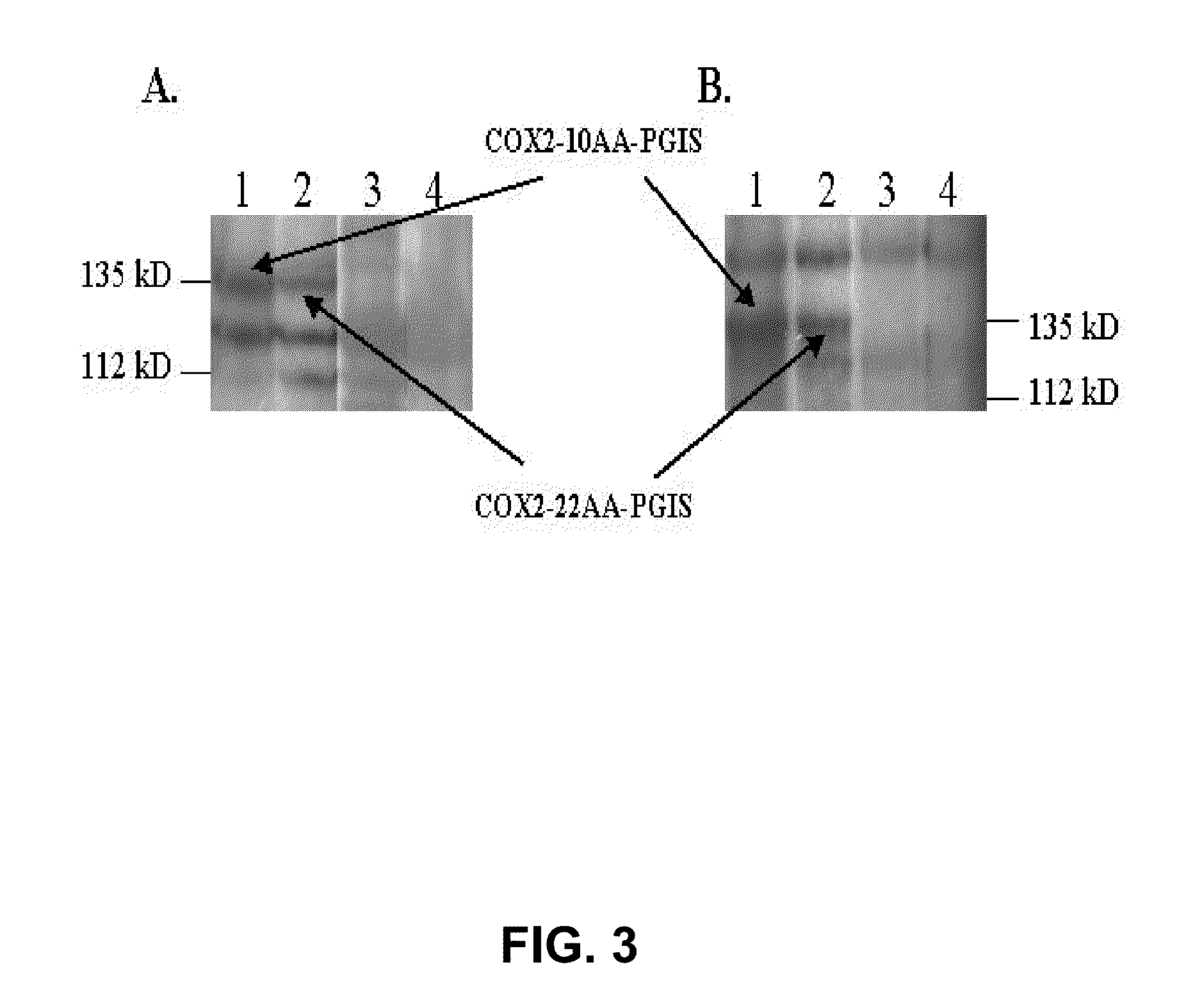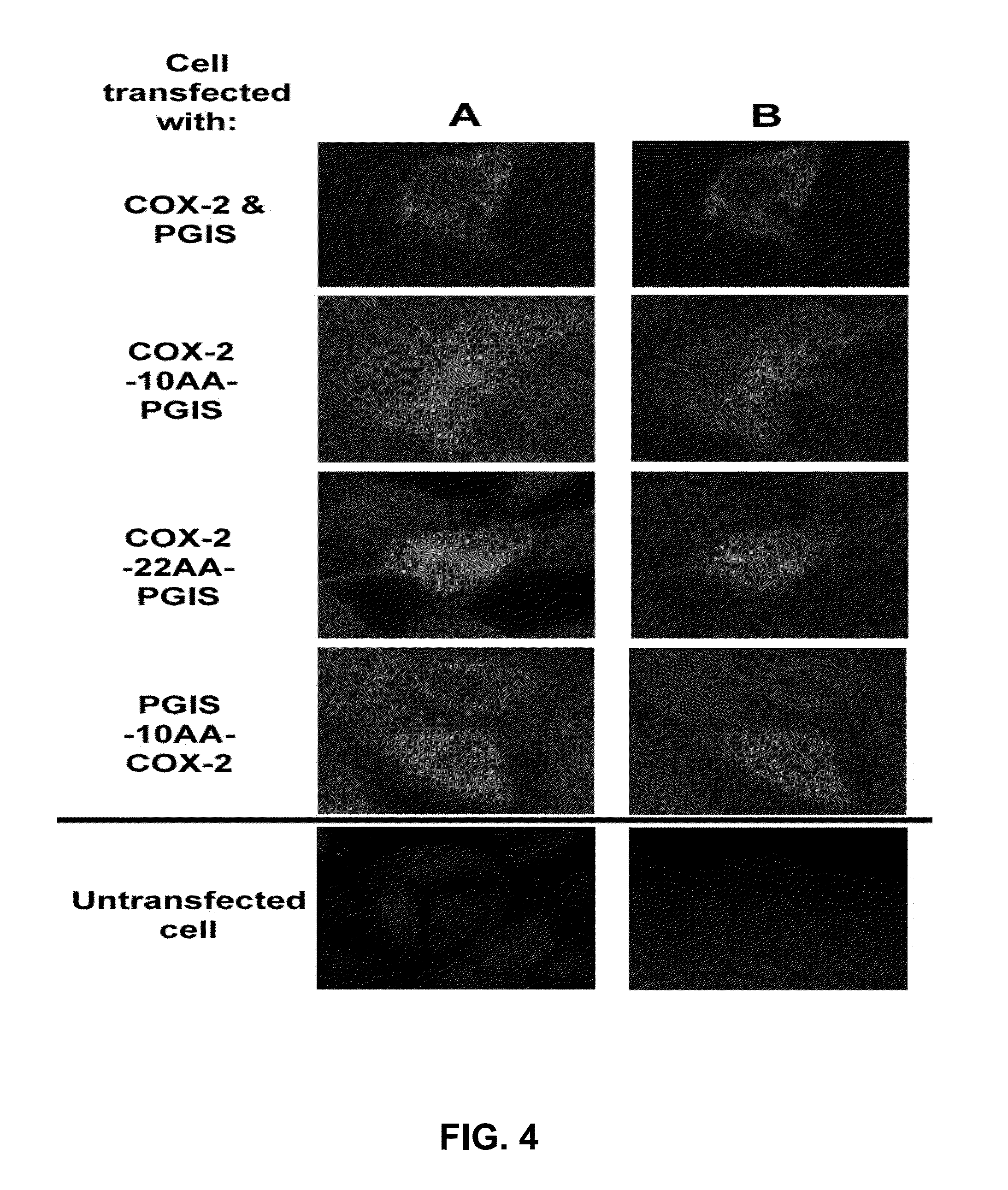Hybrid protein that converts arachidonic acid into prostacyclin
a technology of arachidonic acid and prostacyclin, which is applied in the direction of animal/human proteins, peptide/protein ingredients, peptides, etc., can solve the problems of increasing the risk of thrombosis and vasoconstriction (vi), no drugs have yet been found, and no vascular function damage, etc., to overcome the damage of vascular functions and increase the production of pgi2
- Summary
- Abstract
- Description
- Claims
- Application Information
AI Technical Summary
Benefits of technology
Problems solved by technology
Method used
Image
Examples
example 1
Preparation of Linked Protein
[0056]To test this hypothesis, a linker with 10 (His-Ala-Ile-Met-Gly-Val-Ala-Phe-Thr-Trp (10aa)) or 22 (His-Ala-Ile-Met-Gly-Val-Ala-Phe-Thr-Trp-Val-Met-Ala-Leu-Ala-Cys-Ala-Ala-Pro-Pro-Leu-Val (22aa)) residues of the structurally defined helical transmembrane domain of bovine rhodopsin were used to configure the engineered cDNA containing the COX-2 and PGIS sequences. The sequence begins at the N-terminus of COX-2, which is linked to either DNA encoding 10aa (COX-2-10aa-PGIS) or DNA encoding 22aa (COX-2-22aa-PGIS), and then these are linked to the N-terminus of PGIS that ends with the C-terminus of PGIS. In contrast, an engineered cDNA containing reversed sequences from PGIS, DNA encoding 10aa to COX-2, were also prepared as a control (PGIS-10aa-COX-2 (FIG. 2).
[0057]Engineered cDNA plasmids with single genes encoding the COX-2 or PGIS sequences. COX-2 linked to PGIS, and PGIS linked to COX-2 through the 10aa or 22aa sequence were generated by PCR approach...
example 2
Detection of Linked Protein
[0058]The cDNAs of the engineered COX-2-10aa-PGIS, COX-2-22aa-PGIS, and PGIS-10aa-COX-2 were successfully cloned into a pcDNA3.1 vector containing a cytomegalovirus early promoter using a PCR (polymerase chain reaction) cloning approach (FIG. 2). In FIG. 2, engineered cDNA plasmids with single proteins containing COX-2 and PGIS sequences are shown. COX-2 linked to PGIS, and PGIS linked to COX-2 through the 10aa or 22aa sequence were generated by PCR approach (19) and subcloning procedures provided by the vector company (Invitrogen). Briefly, the corresponding cDNA sequences were isolated from the pSG5 or pcDNA3.1 vector containing human COX-2 or PGIS by PCR using the primers containing the 10aa or 22aa and KpnI or Bam HI cutting sites at both ends (the 5′ end of the anti-sense primer was connected with the DNA sequences of the designed linker). The resulting cDNA segment was cut with the corresponding restriction enzymes and ligated into the corresponding ...
example 3
Localization of Linked Protein to Endoplasmic Reticulum Membrane
[0059]To test whether the expressed COX-2-10aa-PGIS and COX-2-22aa-PGIS could anchor to the ER membrane, adopting similar membrane topologies as the native COX-2 and PGIS, fluorescence immunostaining was used to localize the subcellular distribution of the engineered enzymes overexpressed in COS-7 cells. A similar pattern of ER staining was clearly observed in the COS-7 cells expressing the engineered proteins compared to the cells co-expressing the individual COX-2 and PGIS using either anti-human PGIS (FIG. 4, (A) or anti-human COX-2 (FIG. 4, (B) antibodies. Low-level expression of PGIS-10aa-COX-2 was also observed in the transfected cells, (FIGS. 4 (A,B). The correct pattern of ER staining indicates that the engineered COX-2-10aa-PGIS and COX-2-22aa-PGIS have correct folding and ER membrane anchoring functions and are more suitable for enzymatic activity compared to the PGIS-10aa-COX-2 engineered protein.
[0060]In FIG...
PUM
| Property | Measurement | Unit |
|---|---|---|
| molecular weight | aaaaa | aaaaa |
| volume | aaaaa | aaaaa |
| pH | aaaaa | aaaaa |
Abstract
Description
Claims
Application Information
 Login to View More
Login to View More - R&D
- Intellectual Property
- Life Sciences
- Materials
- Tech Scout
- Unparalleled Data Quality
- Higher Quality Content
- 60% Fewer Hallucinations
Browse by: Latest US Patents, China's latest patents, Technical Efficacy Thesaurus, Application Domain, Technology Topic, Popular Technical Reports.
© 2025 PatSnap. All rights reserved.Legal|Privacy policy|Modern Slavery Act Transparency Statement|Sitemap|About US| Contact US: help@patsnap.com



